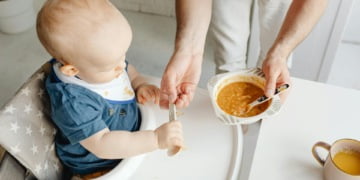Breastfeeding is a natural and beautiful part of motherhood, and for many women, it also plays a role in temporary contraception.
Known as lactational amenorrhea, exclusive breastfeeding can suppress ovulation and delay the return of fertility after childbirth. But this doesn’t last forever.
Whether you’re planning your next pregnancy or simply want to understand your body better, recognizing the signs of returning fertility while breastfeeding can be incredibly helpful.
In this comprehensive post, we’ll explore the key indicators that fertility is returning, what factors influence its return, and how you can track your cycle even while breastfeeding.
Understanding Postpartum Fertility
The Lactational Amenorrhea Method (LAM)
LAM is a form of natural contraception that relies on the hormonal effects of exclusive breastfeeding.
It can be up to 98% effective at preventing pregnancy in the first six months postpartum—but only if three conditions are met:
You are exclusively breastfeeding (no formula or solid food supplementation).
Your baby is under six months old.
You have not yet had a period since giving birth.
Once any of these factors change, the effectiveness of LAM drops, and fertility may begin to return. The Centers for Disease Control and Prevention (CDC) recognizes LAM as a valid method of contraception under these specific guidelines.
Why Does Breastfeeding Delay Fertility?
Breastfeeding impacts the hormones that control ovulation. Prolactin, the hormone responsible for milk production, suppresses the reproductive hormones (GnRH, LH, and FSH) that trigger ovulation.
This hormonal suppression can delay the return of menstrual cycles for weeks, months, or even over a year, depending on individual factors.
Signs Your Fertility May Be Returning
Every woman’s body is different, and the return of fertility while breastfeeding varies greatly.
However, there are several common signs to watch for that can signal ovulation is on the horizon.
1. Changes in Cervical Mucus
Cervical mucus is one of the earliest indicators of returning fertility.
During lactational amenorrhea, mucus is often minimal, dry, or sticky. As ovulation approaches, you may notice:
An increase in mucus production
Mucus becoming clear, stretchy, and egg-white in texture
A sensation of wetness or lubrication in the vaginal area
These are all signs that estrogen is rising and ovulation may be imminent.
2. Cramping or Ovulation Pain (Mittelschmerz)
Some women experience a mild, one-sided pain or cramping in the lower abdomen—often referred to as Mittelschmerz—when ovulation occurs.
If you’re breastfeeding and suddenly feel these mid-cycle pains, it could be a sign that your body is gearing up to ovulate again.
3. Spotting or Light Bleeding
Light spotting, particularly if it’s accompanied by fertile mucus or cramping, can suggest hormonal fluctuations linked to returning fertility.
This spotting might occur before your first true postpartum period, and while it’s not always linked to ovulation, it often indicates that your hormonal cycle is restarting.
4. Increased Libido
A rise in estrogen levels can also lead to an increased sex drive, which naturally aligns with the body’s fertile window.
If you find yourself feeling more sexually interested, this might be your body signaling that ovulation is returning.
5. Breastfeeding Frequency Decreasing
When your baby starts sleeping longer at night or begins eating solid foods, nursing frequency typically drops.
This reduction in breastfeeding leads to lower prolactin levels, which removes the hormonal block on ovulation.
Common triggers include:
Baby sleeping through the night
Weaning or introducing solids
Returning to work or being away from baby for longer stretches
6. Return of Basal Body Temperature (BBT) Shifts
If you’re charting your BBT, you may start to see a biphasic pattern (a rise in temperature after ovulation), which is a clear sign that ovulation is occurring.
While sleep disruptions can make BBT tracking difficult while caring for a baby, some women still find this method useful.
7. Mood Changes or PMS Symptoms
Some women begin to notice emotional or physical PMS symptoms like mood swings, breast tenderness, bloating, or irritability before their first period returns.
These signs suggest that hormonal cycling is resuming and that ovulation may be returning.
First Postpartum Period: What to Expect
When fertility starts to return, your first period postpartum may be:
Heavier or lighter than usual
Longer or shorter in duration
More crampy or completely painless
It’s also important to note that ovulation may occur before your first period, which is why it’s possible to get pregnant without ever having a postpartum cycle.
According to Mayo Clinic, some women ovulate as early as six weeks postpartum, even while breastfeeding.
How to Track Fertility While Breastfeeding
Even though your cycle may be irregular or unpredictable, it’s still possible to track signs of fertility. Here are the most effective methods:
1. Cervical Mucus Monitoring
Get in the habit of checking your cervical mucus daily. Keep a journal or use a fertility tracking app to note changes.
2. Ovulation Predictor Kits (OPKs)
OPKs test for the surge of luteinizing hormone (LH) that precedes ovulation.
However, results can be less reliable while breastfeeding due to fluctuating hormones, so use them in combination with other signs.
3. Basal Body Temperature (BBT) Charting
Take your temperature every morning before getting out of bed. Look for a sustained rise in BBT, which typically occurs after ovulation.
4. Fertility Awareness-Based Methods (FABMs)
These methods combine multiple signs (mucus, temperature, cervical position) to identify fertile days. Examples include:
The Sympto-Thermal Method
The Creighton Model
The Billings Ovulation Method
La Leche League International offers helpful guidance on fertility and breastfeeding, including how these natural methods can be effectively used postpartum.
What Affects the Return of Fertility While Breastfeeding?
Several factors influence when fertility returns:
| Factor | Effect on Fertility |
|---|---|
| Frequency of nursing | More frequent nursing delays ovulation |
| Night feedings | Night feeds maintain higher prolactin levels |
| Baby’s age | Older babies usually nurse less, speeding return of fertility |
| Supplementing with formula | Reduces nursing stimulation and can trigger ovulation |
| Mother’s body weight and health | Underweight or high stress can delay cycles |
| Individual hormonal sensitivity | Varies widely between women |
Some mothers begin ovulating again within a couple of months postpartum, while others remain infertile for over a year, especially if exclusively breastfeeding.
When Should You See a Doctor?
While it’s normal for fertility to take time to return, consult your doctor or midwife if:
You haven’t had a period 15 months postpartum, and you’re no longer exclusively breastfeeding.
You experience very heavy, painful, or irregular bleeding.
You’re trying to conceive and have no ovulation signs for several months.
You suspect you may be pregnant again, even without a period.
Can You Get Pregnant While Breastfeeding?
Yes! Although breastfeeding can delay ovulation, you can become pregnant before your first period.
If you notice signs of fertility returning and don’t want to conceive, it’s time to consider a form of contraception.
Safe options while breastfeeding include:
Barrier methods (condoms, diaphragms)
Progestin-only pill (mini pill)
IUDs
Natural family planning methods
Discuss your options with your healthcare provider to find what’s best for your lifestyle and goals.
Final Thoughts
Understanding your body during the postpartum phase can feel like decoding a mystery, but learning the signs of returning fertility while breastfeeding puts you in control of your reproductive health.
Whether you’re hoping to expand your family or space your children apart, being informed helps you make confident, empowered choices.
Your body is doing amazing work—nourishing a baby while slowly restoring its own rhythms.
Be patient, stay observant, and always reach out to a healthcare professional if you need support.




























